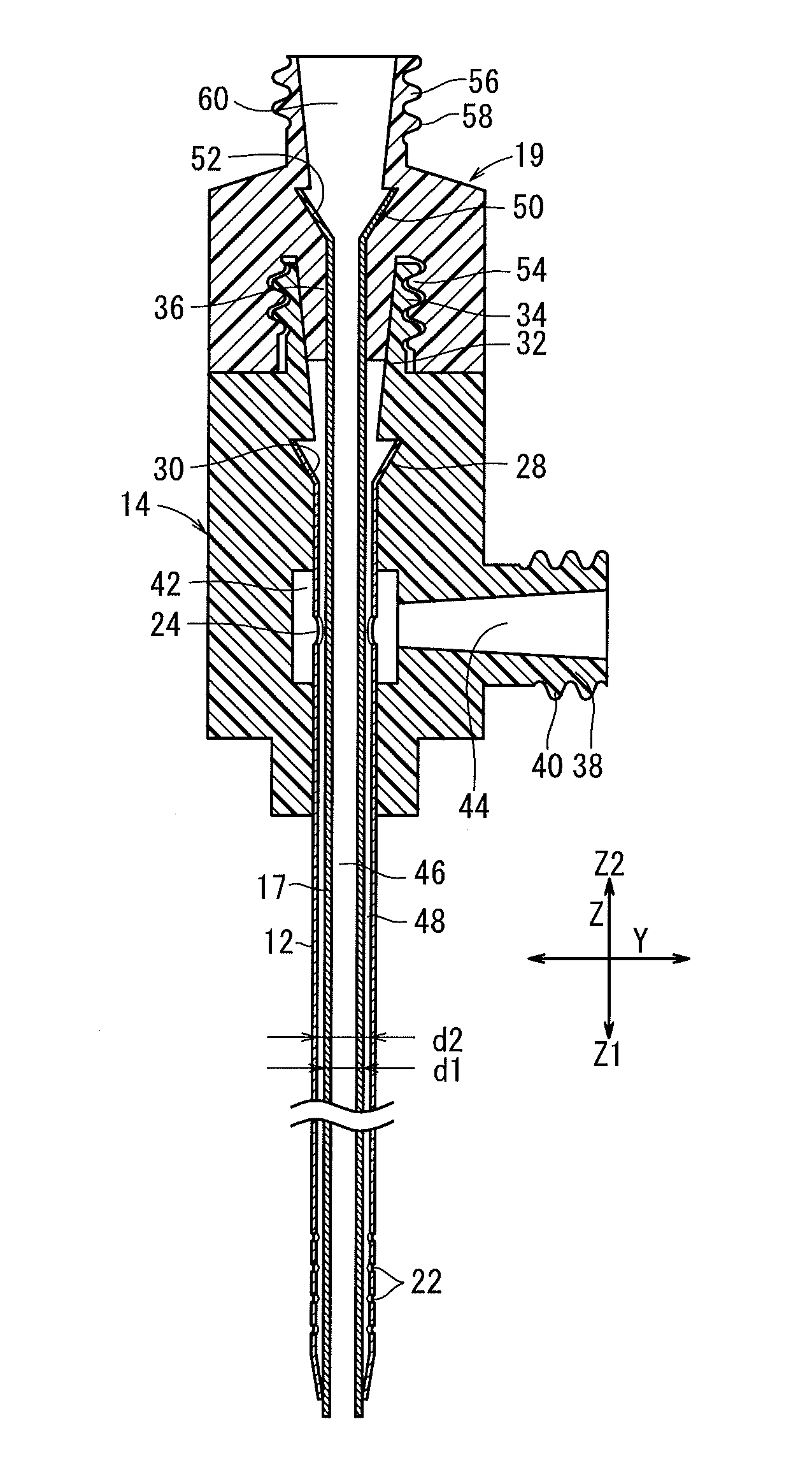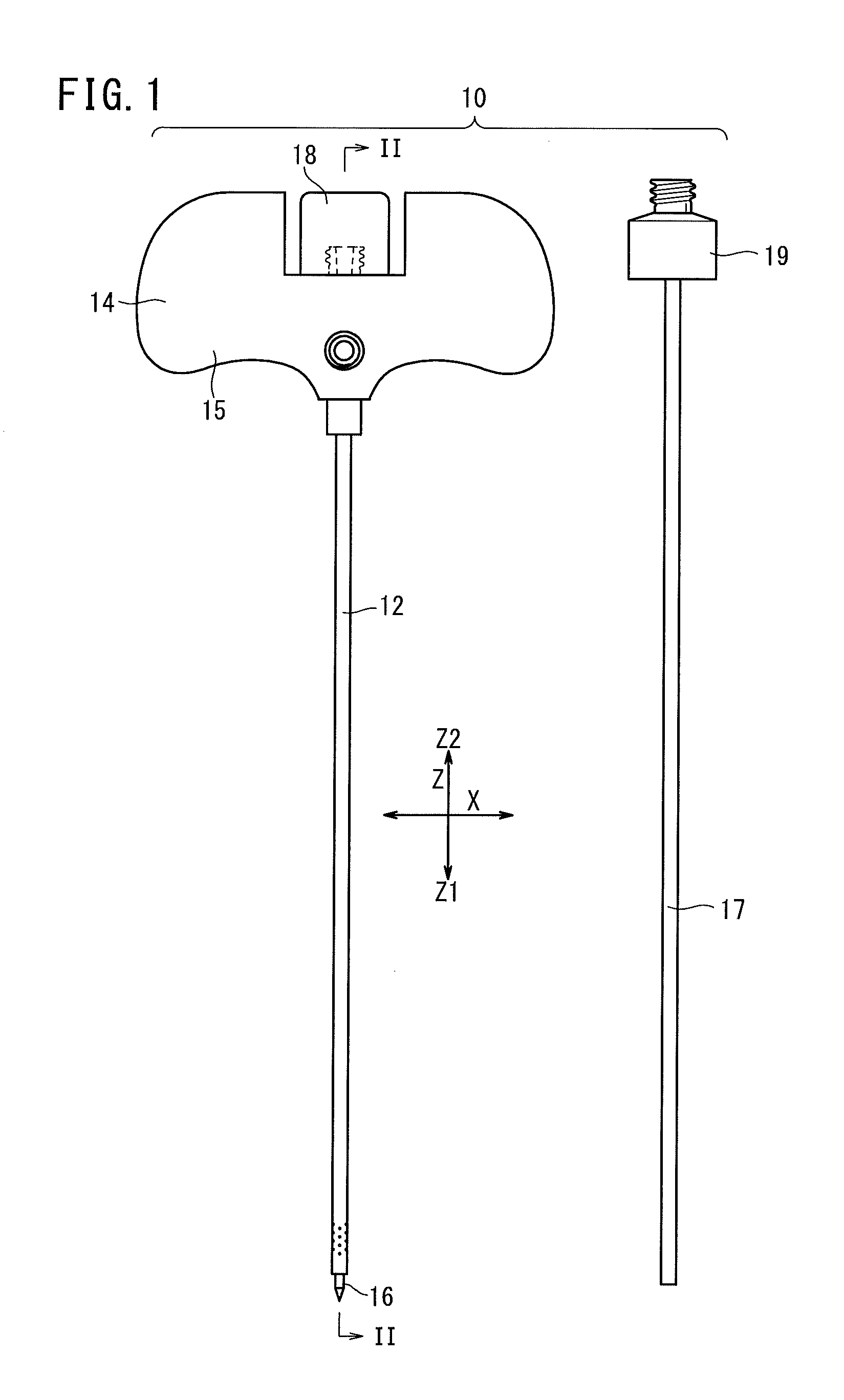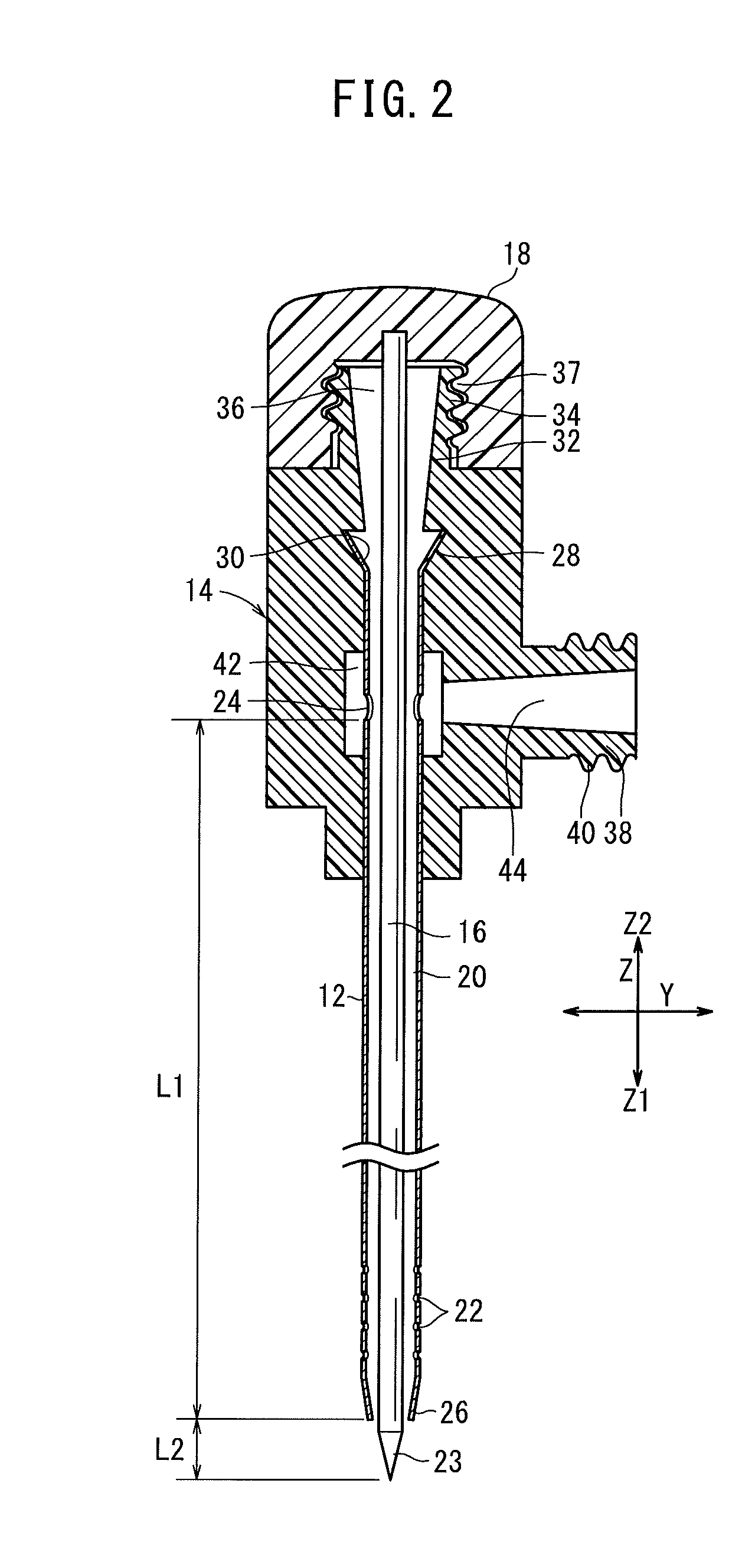Bone cement injection puncture needle
- Summary
- Abstract
- Description
- Claims
- Application Information
AI Technical Summary
Benefits of technology
Problems solved by technology
Method used
Image
Examples
first embodiment
[0040]FIG. 1 is an overall view of a bone cement injection puncture needle 10 (hereinafter referred to as a “puncture needle 10”) according to a first embodiment of the present invention. As shown in FIG. 1, the puncture needle 10 comprises an outer needle 12 having hollow constitution, an outer needle hub 14 fixed to a proximal end portion of the outer needle 12, an inner needle 16 which is insertable in the lumen in the outer needle 12, an inner needle hub 18 fixed to a proximal end portion of the inner needle 16, an inner tube 17 which is insertable in the lumen in the outer needle 12, and an inner tube hub 19 fixed to a proximal end portion of the inner tube 17. In FIG. 1, the inner needle 16 is shown as being inserted into the outer needle 12, while the inner tube 17 is shown as being removed from the outer needle 12.
[0041]In the following description, axial directions of the inner needle 16 and the outer needle 12 are referred to as Z directions, directions perpendicular to th...
second embodiment
[0087]FIG. 7 is a cross-sectional view, partially omitted from illustration, of a bone cement injection puncture needle 10a (hereinafter referred to as a “puncture needle 10a”) according to a second embodiment of the present invention. Parts of the puncture needle 10a according to the second embodiment, which function identically and have the same advantages as those of the puncture needle 10 according to the first embodiment, are denoted by identical reference characters, and such features will not be described in detail below.
[0088]The puncture needle 10a according to the second embodiment includes an outer needle 12a, which replaces the outer needle 12 of the puncture needle 10 according to the first embodiment, and wherein the outer needle 12a is different in constitution from the outer needle 12. The outer needle 12a has a flaring portion 28a and side holes (proximal-end holes) 24a, which are constitutively identical to the flaring portion 28 and the second side holes 24 of the...
third embodiment
[0105]FIG. 12 is a cross-sectional view, partially omitted from illustration, of a bone cement injection puncture needle 10b (hereinafter referred to as a “puncture needle 10b”) according to a third embodiment of the present invention. Parts of the puncture needle 10b according to the third embodiment, which function identically and have the same advantages as those of the puncture needle 10 according to the first embodiment, are denoted by identical reference characters, and such features will not be described in detail below.
[0106]According to the first and second embodiments, as described above, the grip 15, which is gripped by the user of the puncture needles 10, 10a, is included on the outer needle hub 14 (see FIG. 1). According to the third embodiment, however, a different grip 76, which extends in directions perpendicular to the axis of the inner needle 16, is included on an inner needle hub 18a, and the outer needle hub 14b does not include any constitution that corresponds ...
PUM
 Login to View More
Login to View More Abstract
Description
Claims
Application Information
 Login to View More
Login to View More - R&D
- Intellectual Property
- Life Sciences
- Materials
- Tech Scout
- Unparalleled Data Quality
- Higher Quality Content
- 60% Fewer Hallucinations
Browse by: Latest US Patents, China's latest patents, Technical Efficacy Thesaurus, Application Domain, Technology Topic, Popular Technical Reports.
© 2025 PatSnap. All rights reserved.Legal|Privacy policy|Modern Slavery Act Transparency Statement|Sitemap|About US| Contact US: help@patsnap.com



